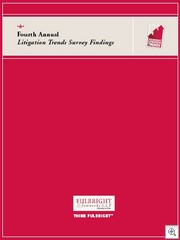MercExchange v. eBay (E.D.Va. 2007)
In July, 2007, the < ?xml:namespace prefix ="" st1 />Virginia district court denied MercExchange’s motion for a permanent injunction against eBay. That order is now on appeal to the CAFC and may well establish the future guidelines for injunctive relief in patent cases. < ?xml:namespace prefix ="" o />
In 2006, the Supreme Court heard MercExchange’s initial injunctive relief appeal in that case, the Court found that the Federal Circuit was wrong to always favor injunctive relief and that the District Court had been incurred to deny injunctive relief based on categorization of MercExchange as a non-practicing entity. Rather, the high court held that injunctive relief decisions must be based on an individualized analysis of the traditional factors governing equitable relief. As stated by the Supreme Court:
“[a] plaintiff must demonstrate: (1) that it has suffered an irreparable injury; (2) that remedies available at law, such as monetary damages, are inadequate to compensate for that injury; (3) that, considering the balance of hardships between the plaintiff and defendant, a remedy in equity is warranted; and (4) that the public interest would not be disserved by a permanent injunction.” eBay Inc. v. MercExchange, L.L.C., 126 S. Ct. 1837 (2006)
On remand, the district court again denied equitable relief to MercExchange – finding that the plaintiff did not adequately prove the four factors.
Presumption of Irreparable Harm: The MercExchange district court read the above quoted language to block any presumption of irreparable injury based on a judgment of patent infringement. Of course, that is not the only reading of the eBay decision. Another consistent opinion would find that a plaintiff may demonstrate irreparable injury by proving ongoing patent infringement.
Here, the court found that MercExchange would not be irreparably harmed by ongoing infringement because MercExchange is not in the process of developing its invention, it focuses its licensing regime on companies that independently developed the invention, it offered a license to the defendant, its only employees are patent attorneys, it failed to request a preliminary injunction, its patent is a business method patent which are of ‘suspect validity,’ and the ongoing reexamination coupled with the new KSR precedent puts the validity of the MercExchange patent in doubt. According to the court, eBay’s market dominance weighs in MercExchange’s favor, but is insufficient.
Willful Infringement:: A consideration of willful infringement does not fit cleanly into any of the four eBay factors as stated. However, the maxim of unclean hands is a longstanding principle of equitable relief and thus must be considered.
“Frankly, it appears to the court that neither side has particularly clean hands as both have engaged in litigation tactics that at times may have crossed the line; however, neither side has successful proven the other to be unworthy of a ruling in equity due to unclean hands.”
Here, the district court disregarded the jury’s willfulness finding because it was a “close call” and enhanced damages are sufficient to punish such behavior
Public Interest Favors No Injunction:
“eBay is a multibillion dollar corporation whose online marketplace brings together tens of millions of buyers and sellers around the world and eBay unquestionably has a substantial impact on the United States’ economy; furthermore, eBay’s success pre-dates its infringement. In contrast, MercExchange is a company with two employees that work out of their homes and appear to specialize in litigation and obtaining royalties for licenses based on the threat of litigation. Although the public plainly benefits from a strong patent system and protection from an infringer may be vital when a patent held by a small patent holder is infringed upon by a multi-billion dollar corporation such as eBay, the strongest arguments in equity exist when such small patent holder utilizes its patent to benefit the public; that is, either seeks to develop the patent on its own or develop the patent through licensing agreements. Similarly, equity may favor a patent holder that seeks to defend its right to exclude and prevent development of its patent by others.”
Injunction denied. The appeal is expected to be heard in early Spring 2008.
Notes:
-
-
-
-
Last week, Judge Friedman affirmed a $30 million verdict for MercExchange. EBay’s stock quickly rose on the news. [Link] EBay is appealing the final judgment — and is expected to argue that the patent is invalid under KSR v. Teleflex.


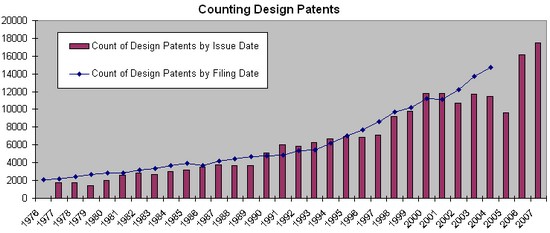
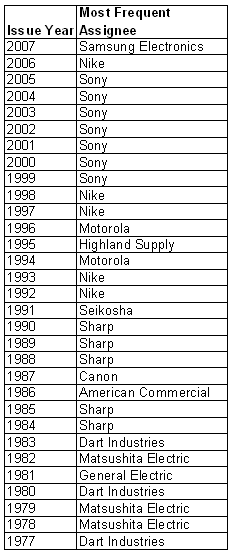 Louis Zarfas is the primary examiner associated with the most issued design patents. Mr. Zarfas has allowed over 16,000 design patents since his first (as a primary) in 1978. Over 1,000 of those design patents relate to shoe designs claimed by companies such as Nike, Reebok, AVIA, Asics, LA Gear, Rockport, Sketchers, Wolverine, Keds, Louis Vuitton, Timberland, Berluti, and Kangaroos.
Louis Zarfas is the primary examiner associated with the most issued design patents. Mr. Zarfas has allowed over 16,000 design patents since his first (as a primary) in 1978. Over 1,000 of those design patents relate to shoe designs claimed by companies such as Nike, Reebok, AVIA, Asics, LA Gear, Rockport, Sketchers, Wolverine, Keds, Louis Vuitton, Timberland, Berluti, and Kangaroos. 

 Wynn W. Coggins — the PTO’s Chief Examiner of eCommerce patent applications — recently published a useful article about how her art unit deals with electronic prior art. The following are some highlights.
Wynn W. Coggins — the PTO’s Chief Examiner of eCommerce patent applications — recently published a useful article about how her art unit deals with electronic prior art. The following are some highlights. 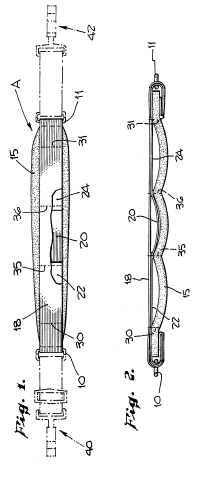 In March, 2007, the Central District of California dismissed Comfort Strapp’s complaint on summary judgment — finding no proof of infringement. Comfort Strapp’s patent relates to a comfortable shoulder strap for luggage.
In March, 2007, the Central District of California dismissed Comfort Strapp’s complaint on summary judgment — finding no proof of infringement. Comfort Strapp’s patent relates to a comfortable shoulder strap for luggage. 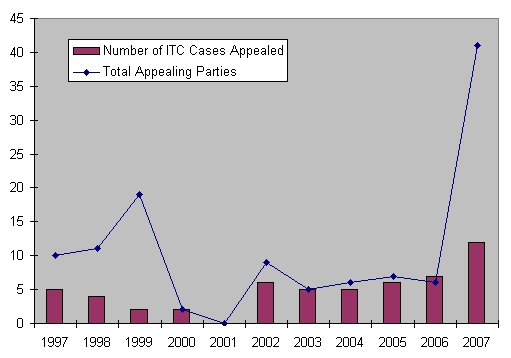
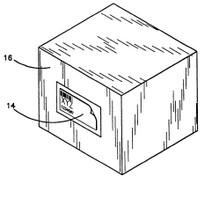 MTP v. Marathon Labels
MTP v. Marathon Labels Aristocrat Technologies Australia (ATA) v. International Gaming Technologies (IGT) (Fed. Cir. 2008 PENDING)
Aristocrat Technologies Australia (ATA) v. International Gaming Technologies (IGT) (Fed. Cir. 2008 PENDING) New York University v. Autodesk, 495 F. Supp. 2d 369 (
New York University v. Autodesk, 495 F. Supp. 2d 369 (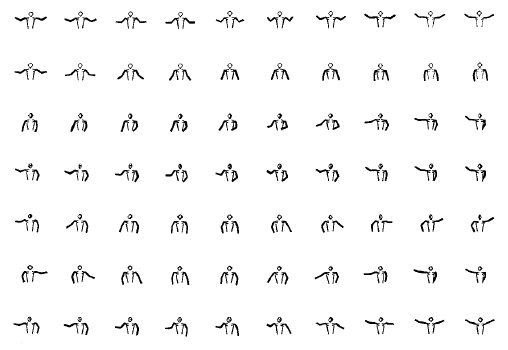
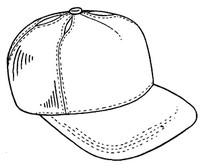
 Here, the court described what he saw:
Here, the court described what he saw: 